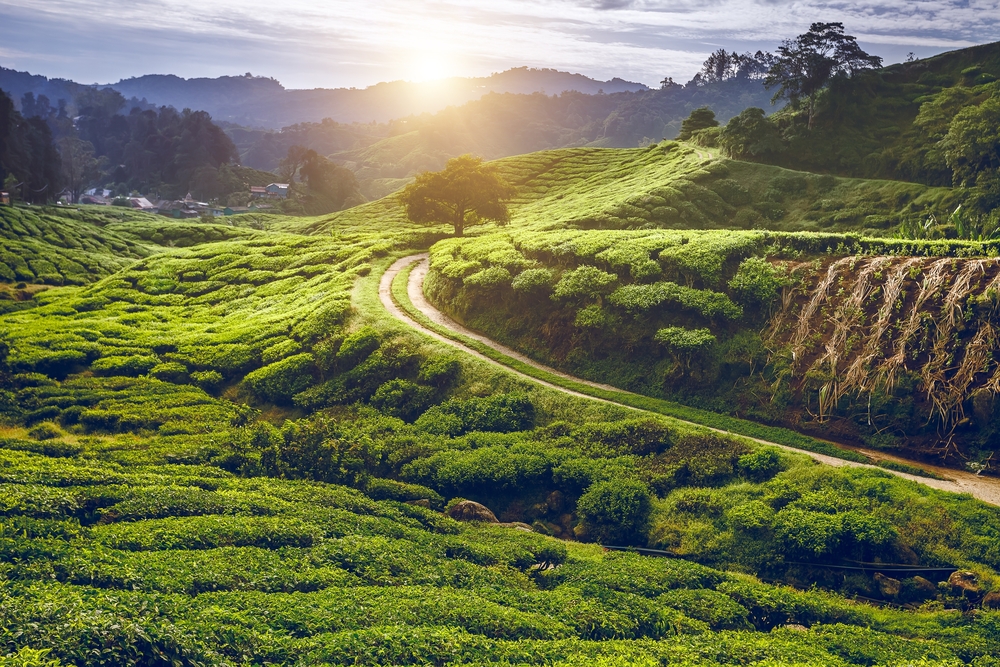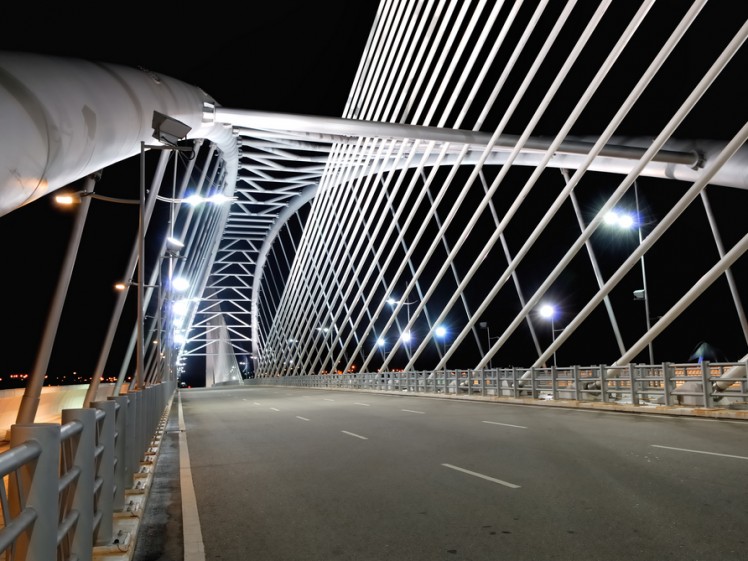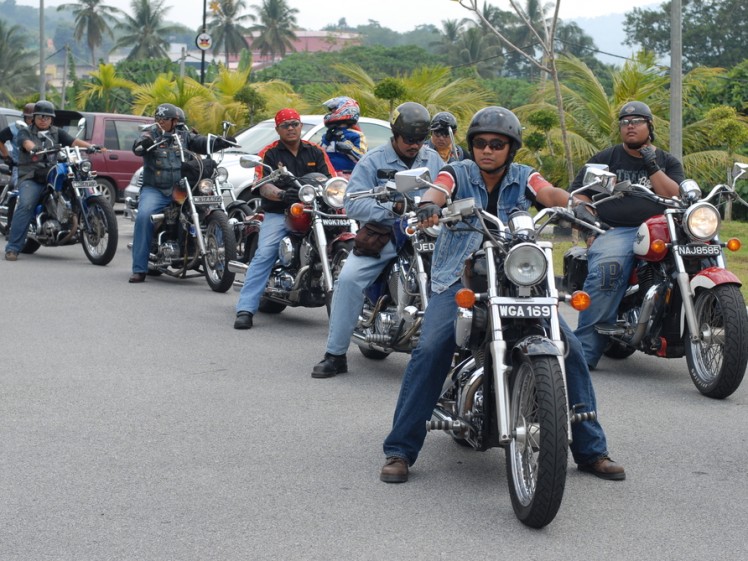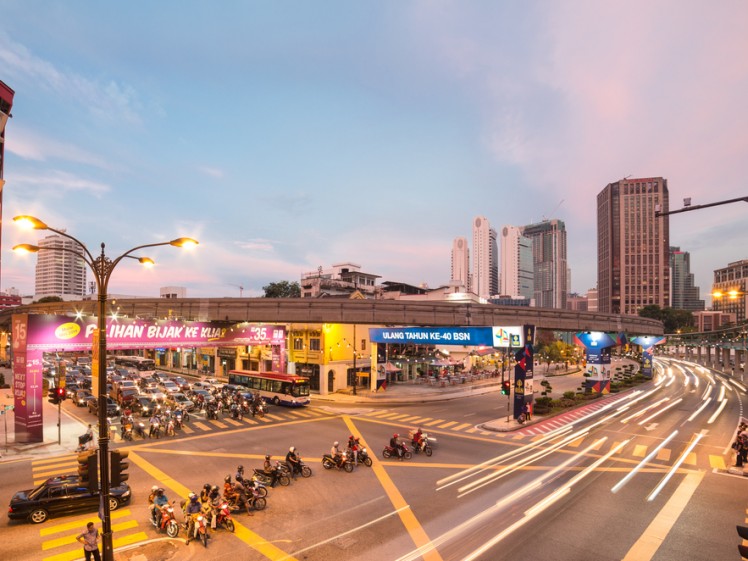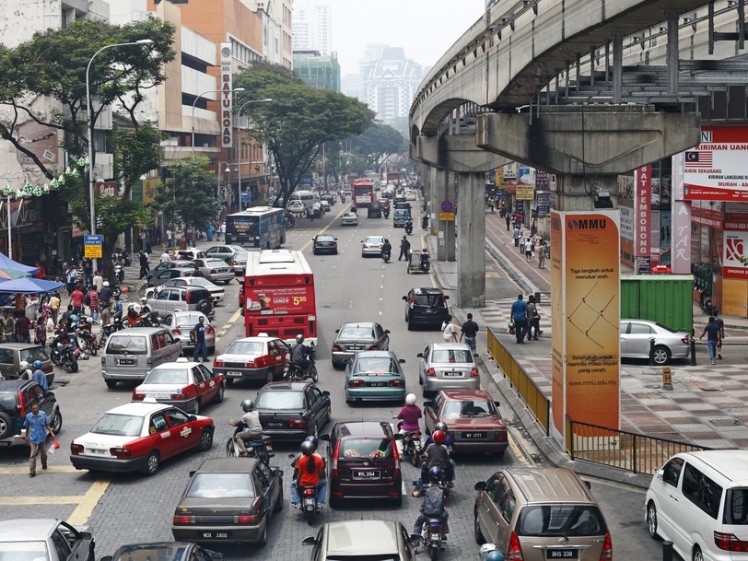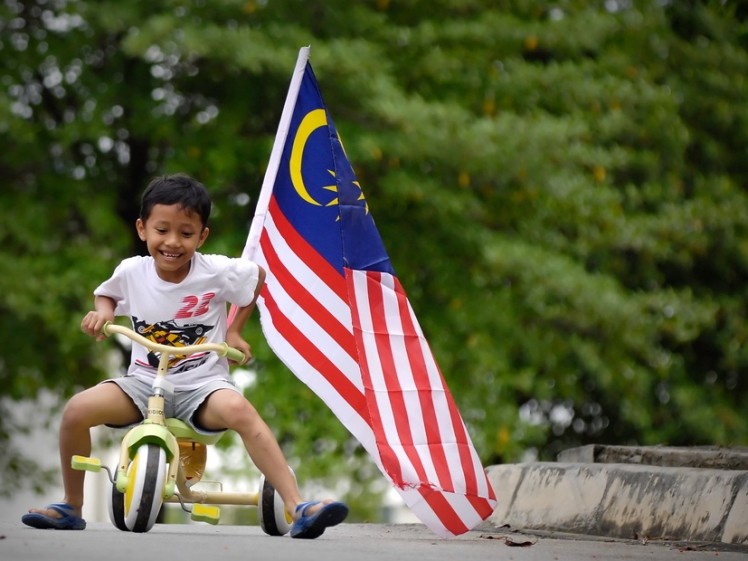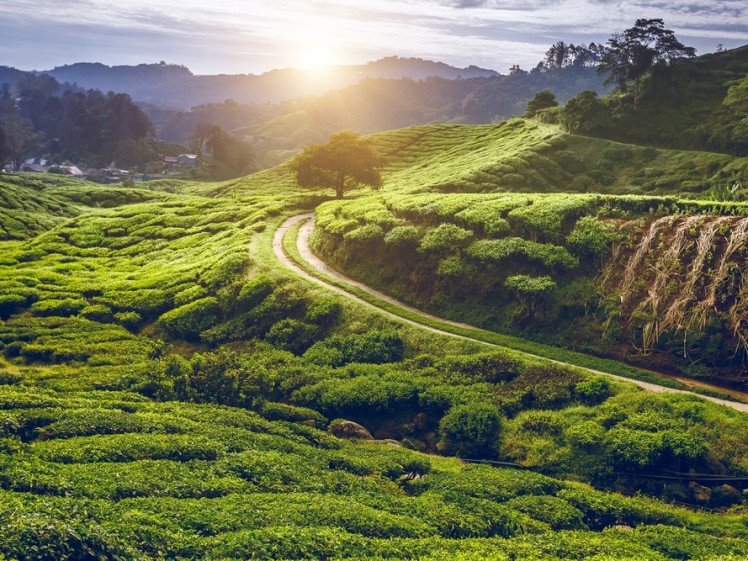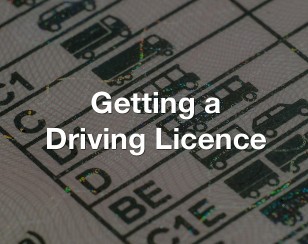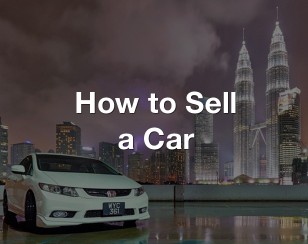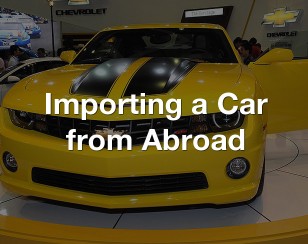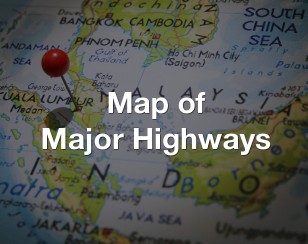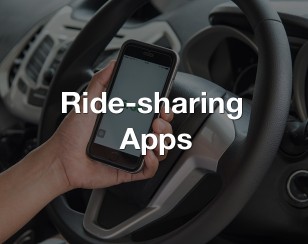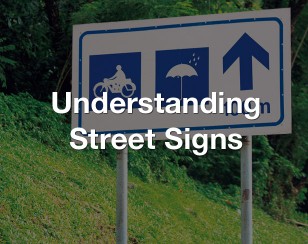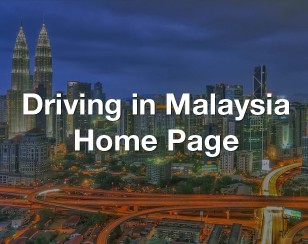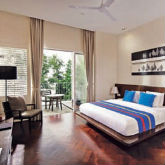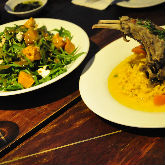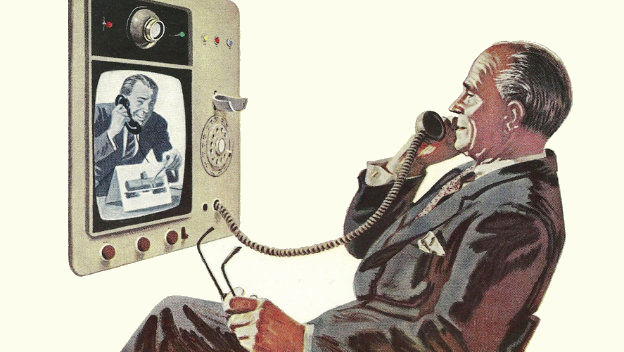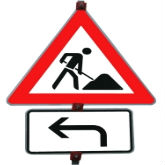
TEG’s Publisher Andy Davison offers his insights in the frenetic world of driving in this country.
Malaysia is relatively free of natural disasters but in the minds of some, driving in Malaysia makes up for that absence. It is true that Malaysia has a fairly high death toll relative to the number of road vehicles and when you see the way some people – particularity motorcyclists – drive, and ignore the usual rules of the road, it’s no great surprise.
To be fair, the majority of motorbike riders are just trying to get from point A to point B as safely as possible. Usually it is the only transportation the owners can afford, and therefore overloaded bikes with young children squeezed between parents are not uncommon.
The extremely heavy rain in Malaysia combined with unfilled potholes and sometimes inconsiderate car drivers can make riding a motorcycle a hazardous endeavour. Even careful motorcycle riders often find themselves victims of inconsiderate car drivers, so give them some room for manoeuvre.
Although it seems at one time quite a few Malaysians were able to avoid taking a driving test, the current rules are quite strict and learners cannot drive on the road except with an approved instructor.
In addition they have to drive with a “P” (provisional) sticker for two years after passing their written and practical test. So if you see a car with a “P” plate stuck in the back or front window give them a little extra space.
Malaysia, like most Asian countries, has more motorcyclists than Western countries, which is one reason the first four points concern drivers on two wheels.
Other vehicles
1. The speeding motorcyclist
If you forget how young people have a tendency to think they cannot die, it is easy to believe some motorcyclists have a death wish. More than half the deaths on Malaysian roads are motorcyclists. Most of the speed merchants are young males who may pass your car on either side, with heads bowed, jacket on back to front and little engines screaming away, usually within inches of your car.
They will often cut in front of you to change lanes for the fun of it and on many occasions I have had to brake hard to avoid hitting one. This can be quite unsettling (for which read ‘bloody annoying’) but sounding your horn and screaming abuse will do nothing except help vent your frustration as they will be long gone.
2. Motorcyclists set their own rules
Motorcyclists often behave more like pedal cyclists in Western countries. They will drive on the pavement and the wrong way down one way streets. If you are first in line at traffic lights in any major town or city you can expect your car to soon be surrounded by motor bikes.
Some will go straight through the red light at the first opportunity while others will get ready for a “Grand Prix” start and yet others will struggle to get their overloaded bikes moving again. You may well find all the lanes ahead of you blocked until they sort themselves out.
3. The motorcyclist’s rear light
All motorcyclists in Malaysia are required to drive with their lights on all the time.
While most comply with the front light, many do not know or care that their rear light is not working. This can obviously be extremely dangerous at night or when the visibility is poor, so be on the lookout.
4. Motorcyclists, rain, and bridges
As most new arrivals quickly learn, torrential rain is not uncommon in Malaysia and it only takes a few seconds to be soaked. Motorcyclists are particularly vulnerable and the practice in Malaysia is to shelter under the nearest bridge. Obviously this can result in a large number of motorbikes huddling under one bridge.
It is common to find the slow lane full of parked motorbikes when you enter a tunnel or go under a bridge on a rainy day. If the rain is very heavy, you may only see them at the last minute with potentially disastrous consequences.
Following a few fatal accidents, the government is building places for the bikes to shelter off the main road, but this is a huge project. The rule is, try not to enter a tunnel or bridge in the slow lane, unless you can clearly see there are no bikes waiting there.
5. Aging trucks
Most companies have upgraded their fleets of trucks (lorries) but there are still some very old ones on the road. You can recognise them as they often have either half a door or no door at all.
They are incapable of high speeds and when going uphill they travel so slowly the casual observer would be justified in thinking they have actually stopped, so exercise caution when coming up behind a truck on a hill as the gap may close much more quickly than you expect.
When trucks break down they rarely put any warning signs behind their vehicle. This can be particularly dangerous at night when roads are poorly lit – as several motorists have found out, sometimes fatally.
6. Long-distance buses
Long distance buses pose another problem. The upgrading of most bus fleets has substantially reduced the belching black fumes they used to emit but the quality of some drivers leaves a lot to be desired and the high number of bus accidents is evidence of this. Some still drive as though their size justifies any action they take.
It is not at all uncommon for buses to decide to overtake when they choose without consideration for you approaching rapidly in the fast lane. Of course, it’s not just buses that do this but they can be more intimidating.
Lights and lanes
7. A red traffic light doesn’t always mean ‘stop’
If the traffic lights have just changed many cars will carry on through them. This practice has decreased somewhat since cameras were installed at many lights in KL but nevertheless it still happens and motorcyclists routinely go through red lights so be careful if you are approaching a light, even if it is green.
8. Blinking hazard lights do not mean ‘I’ve stopped’
In many countries, putting on all four blinking lights indicates that you have stopped your car. In Malaysia, it is quite common for drivers to do this when they drive slowly in heavy rain. Apparently, at one time, the government suggested this.
Some motorists will also put on their hazard lights in preference to side lights when they enter a tunnel. Efforts are being made to stop the practice and it has decreased, but you will still see drivers who do it.
9. The slow lane is not for cars
Very few Malaysian drivers are willing to drive in the “slow” left hand lane on a three-lane road. Most will drive happily in the middle or even the fast lane when slower lanes are completely empty.
While it has been explained to me that this is because they leave it for motorcyclists the reality is I have often seen completely empty inside lanes which had no traffic of any kind. This of course encourages many drivers to overtake on the inside lanes and this is illegal, but quite a common practice in Malaysia.
10. Joining the road
One of the most common practices in Malaysia is not to pause when coming out of a side road. It would be fair to say that in Malaysia many drivers ask themselves only one question: “Can that driver stop his car before hitting me if I pull out in front of him?” If the answer is “yes” then many will pull out. So don’t be surprised if a car suddenly appears from a side street in front of your car.
11. Lane discipline on the highway
On highways you will often see cars driving slowly in the fast lane. Even flashing your lights and sounding your horn will not move them. You then have to decide whether to sit patiently behind them or illegally pass on the inside.
Other drivers will pass you on the inside before giving you any sign they want to pass and often without any warning so always check the slow lane carefully if you are moving into it as you may find a fast driver hurtling towards your passenger side.
This rule is also important when turning left as motorbikes can often appear from nowhere in your inside lane and many expats have ended up hitting them.
How to behave
12. The accident crowd
The Americans call it rubber necking and most countries experience a major slowdown in traffic when there is an accident, but in Malaysia you can expect a lot of people to park their cars and motorbikes so they can stand around and watch the complete event. Some will record the license plates for their next lotto game!
13. A queue of cars must be passed
Whenever there is a line of cars stopped in a jam, expect to see drivers looking for an opportunity to jump the queue. A single lane of cars can soon become two or three lanes if there is space to fill.
I have often seen cars move into the oncoming lane to pass cars stuck in a jam, and when an oncoming car comes they just force their way back or squeeze closer to the cars they are passing if there is no opening.
It is rare indeed to hear much protest from Malaysian drivers. Vehicles reversing along expressways, usually just after missing an exit ramp, are also not that uncommon.
14. Never walk if there is space to park your car
Malaysians generally are not keen on walking and given the hot weather, it is understandable. Unfortunately this means they not only park badly, on blind corners or with part of their car sticking out into the road, but they will also often create a second lane of parked cars. This can mean you can be blocked into your space and even leaving your hand on the horn may not immediately produce the driver.
The introduction of tow trucks in KL and PJ was done to curtail this habit but it seems the authorities have stopped using them. It’s a great pity because cities with strict policies about illegal parking like London or Sydney rarely have such problems.
15. Drive around the city during major festive holidays
During festive occasions, such as Hari Raya or Chinese New Year, hundreds of thousands of Malaysians ‘balik kampung’ meaning return to their hometowns and villages. Although some fly and others go by train, the roads rapidly fill up.
Those that see these holidays as a chance to discover the countryside may find the speed of progress gives them more time than they wish to examine the landscape. This is a good time to drive around the major cities for some sightseeing and photography because you will find most city streets pleasantly deserted.
Many Malaysians also get upset by the driving habits of some of their fellow countrymen and the majority are responsible and considerate drivers. Some Malaysians pointed out to me that they have seen plenty of bad expat drivers and that’s also true.
16. Go for the space
Quite a bit of traffic congestion could be avoided if people thought through what is causing a jam or used their rear view mirror to see if they need to move their car to alleviate congestion behind them. Both these practices are very rare in Malaysia.
Leaving spaces for cars to exit or enter a side street will only happen if there are yellow lines painted on the road and even that is no guarantee. If you need the driver ahead to move forward a few inches so you can get out of the jam or make space for another car to move it’s unlikely to happen without a lot of horn sounding and even then don’t bet on it.
If you are trying to enter a main road when there is a steady stream of slow moving traffic do not expect anyone to let you in, you will have to force your way into the stream as soon as a gap presents itself.
The Malaysian way
17. Baby sits up front
Some expats are appalled to see people holding their baby in the front seat, or young kids standing on the front seat.
Please remember if you hit another car or force it to brake quickly, you may end up causing a lot more injury than if you had the same accident in a Western country where child seats are the law and are rigorously enforced.
18. Big Brother is watching you
In the last 10 years many speed cameras have been installed in sections where there have been many accidents. There are yellow signs announcing “Zon Operasi Camera”, when you enter a section where there is a camera. Usually they are visible and face away from you to catch you after you have passed them.
Police also use hand-held cameras. These can be as much as 20 kilometres before the police wave you down. This is to reduce the effectiveness of motorists driving from the other direction who flash their headlights to warn drivers about impending police road blocks. By the time you see the drivers flashing their headlights you are probably already booked!
In addition many traffic lights have cameras installed, especially in cities, to catch people who jump the traffic lights.
Al these offences can lead to demerit points which can ultimately mean losing your licence if you collect enough of them. One solution to reduce the risk is to always use the ‘waze’ app (see below)
19. Mobile phones and turns
In some countries you can use a handphone while driving. In Malaysia this is against the law and only hands-free kits are permitted.
The other law, which is different from some countries (like some states in the US) is that you are not permitted to turn (left) at a red light. You are also not permitted to do a U-turn at a traffic light unless there is a sign showing you can make one.
20. The road bumps
Most countries use the system of road bumps to deter speeding traffic in residential areas. In Malaysia they are widely used even on busy bus routes. There does not appear to be any standards for their frequency or height. Some can be driven over at speed with minimal impact and others can do serious damage to your car if you are not driving very slowly.
It’s best to assume they are all high bumps until you get used to the ones you go over regularly. Often they are preceded by a sign and the bump will be painted with yellow stripes but when new ones are placed expect a delay of several days before they are painted again.
During that time you could entertain yourself watching unfortunate drivers smash the bottom of their cars into them.
A bonus helpful tip: ‘Waze’ proves very popular in Malaysia
With some six million users, the mobile app ‘Waze’ has become very popular in Malaysia, more so than in most other countries. Apart from helping you find your destination, it can tell you the fastest routes, thanks to the feature allowing drivers to update it in real time.
It warns you of fixed speed cameras and traffic lights with cameras. It can advise you the location of mobile speed cameras, although only after the first driver has spotted them and updated the app.
But – don’t be afraid to get on the road
Over the last 20+ years, I have driven hundreds of thousands of kilometres on Malaysian roads and despite a few close shaves I have more scratches from leaving my car parked in the city streets than driving around the country.
None of the items on this list should be used as an excuse not to explore Malaysia by road. Once you get used to the local official and unofficial “rules of the road,” you will find the risk of an accident is relatively low and see that Malaysians to be forgiving drivers who rarely indulge in road rage and have quick reactions when other drivers do stupid things.
There is so much beautiful scenery and so many interesting places to visit, it is a real loss if you do not get out and enjoy the country – just don’t let your eyes stray from the road for too long.
The ExpatGo Guide to Driving in Malaysia – Index
"ExpatGo welcomes and encourages comments, input, and divergent opinions. However, we kindly request that you use suitable language in your comments, and refrain from any sort of personal attack, hate speech, or disparaging rhetoric. Comments not in line with this are subject to removal from the site. "

